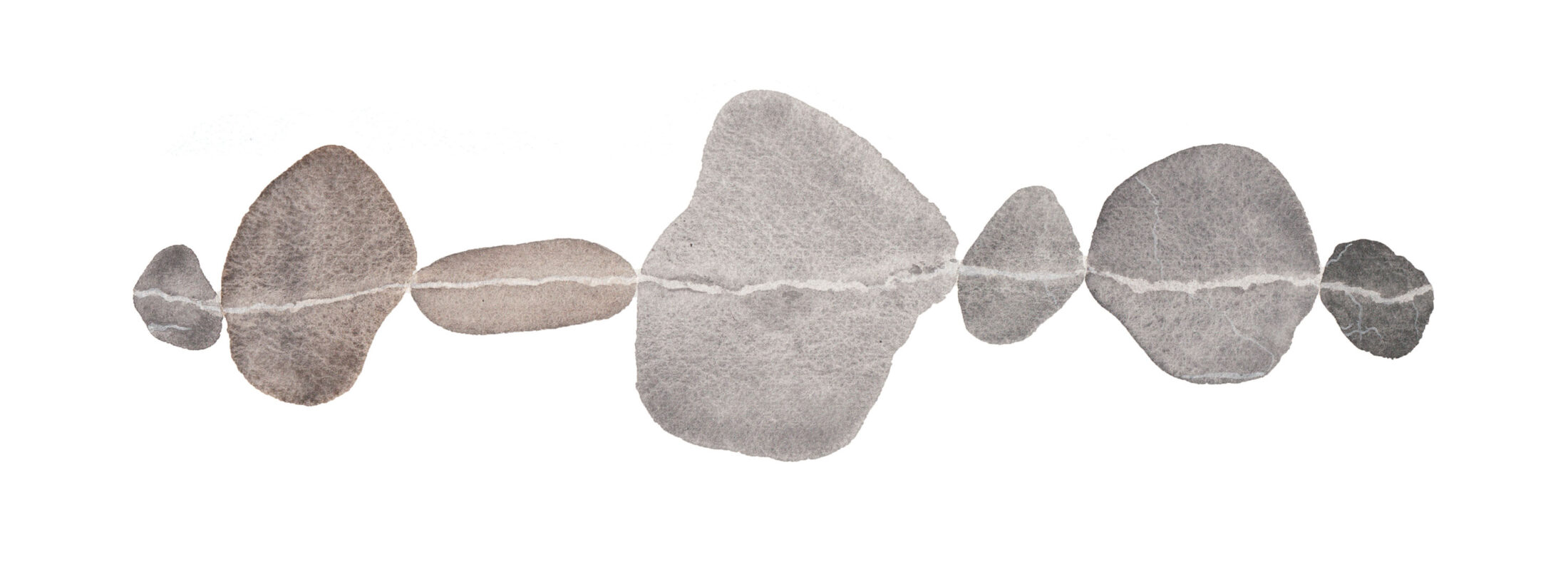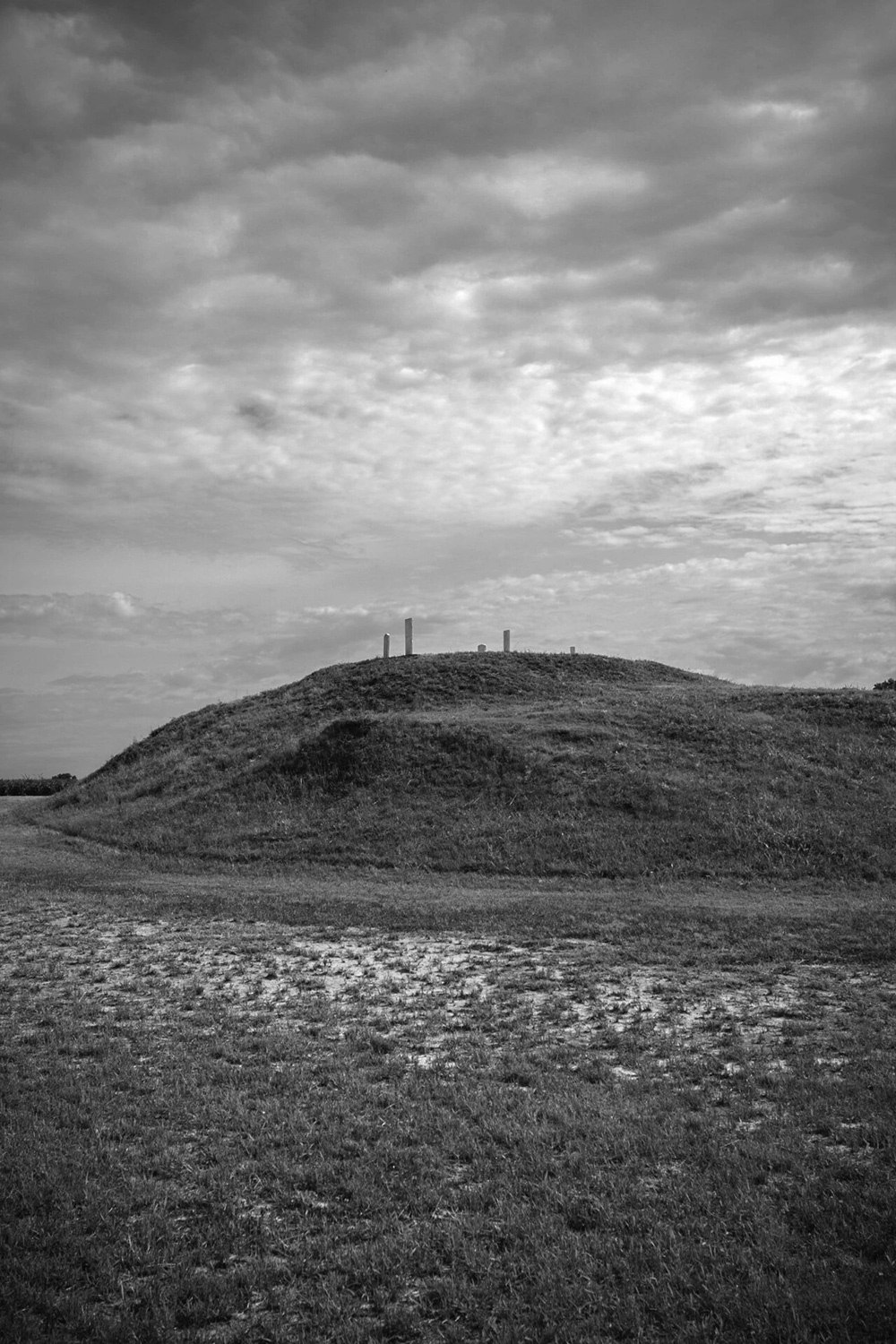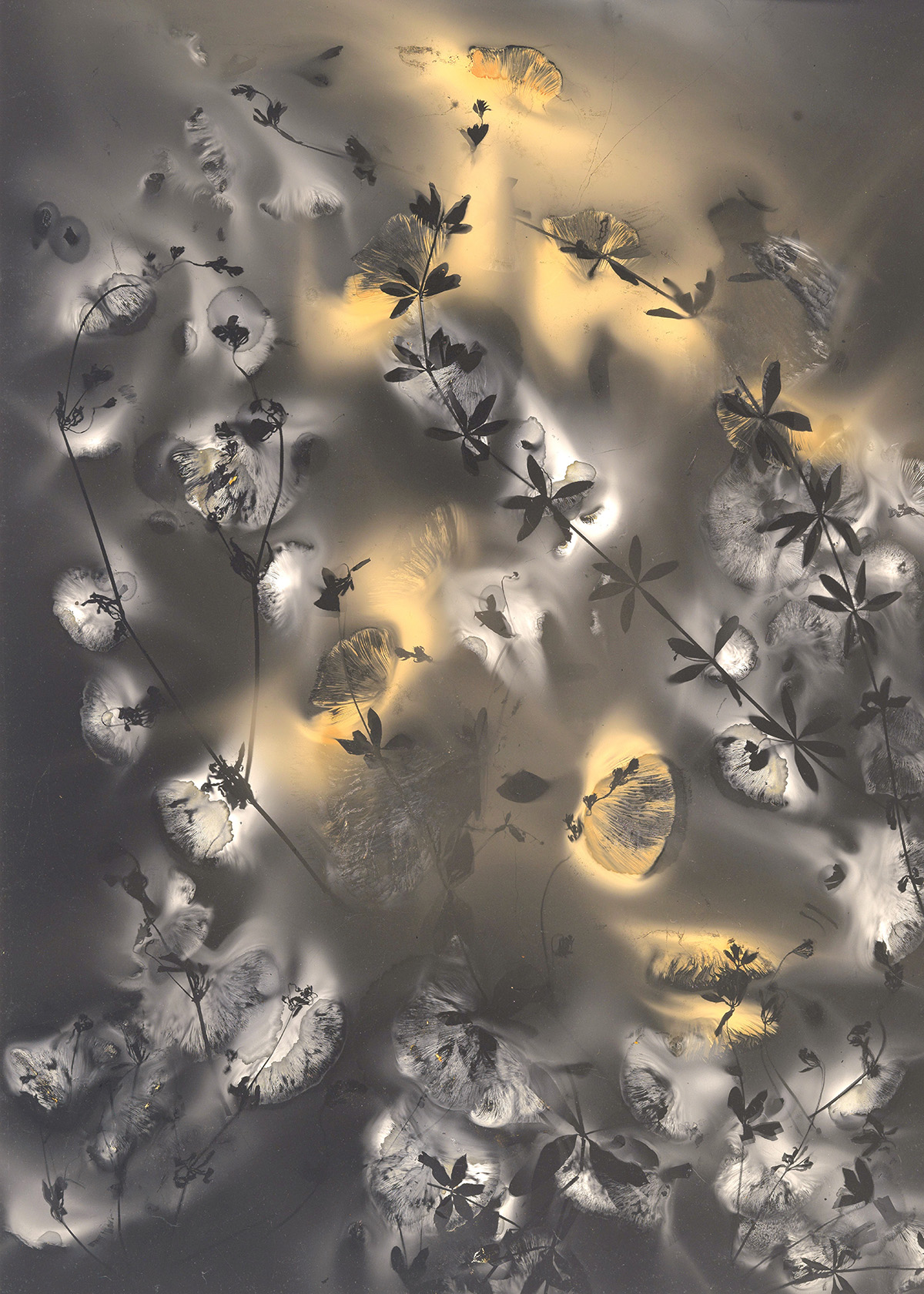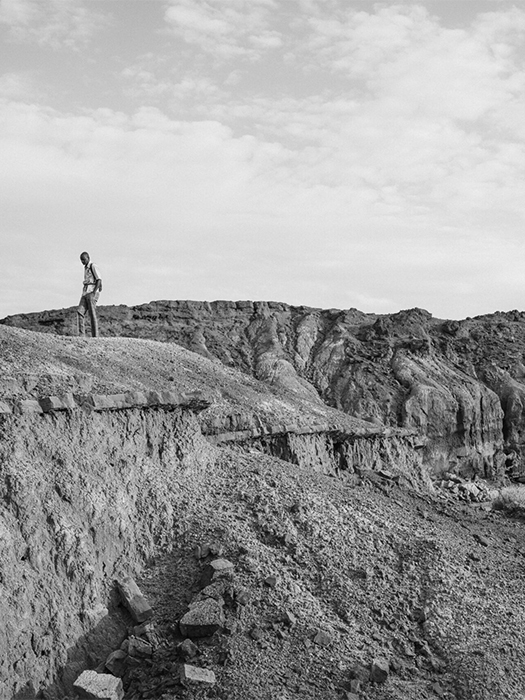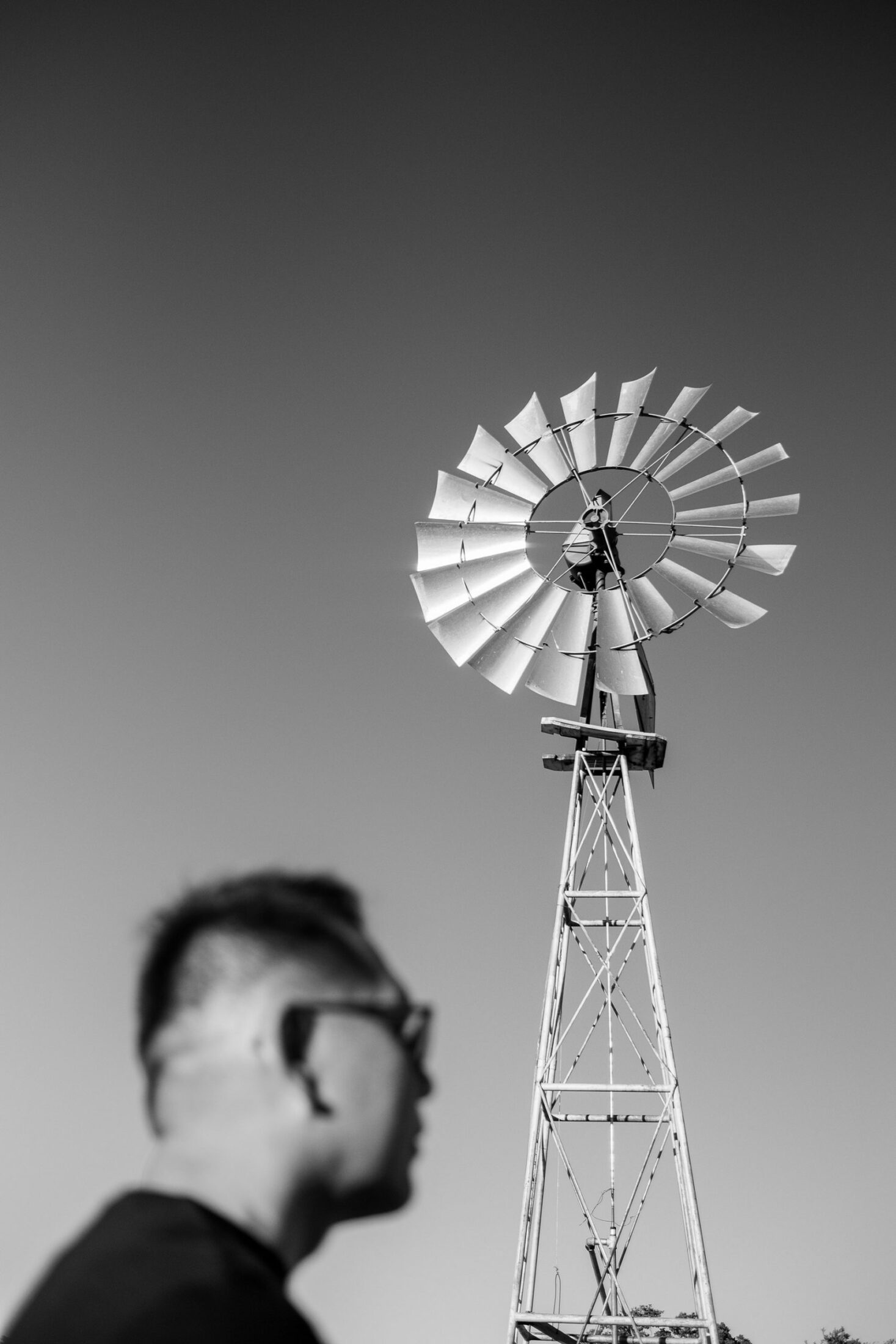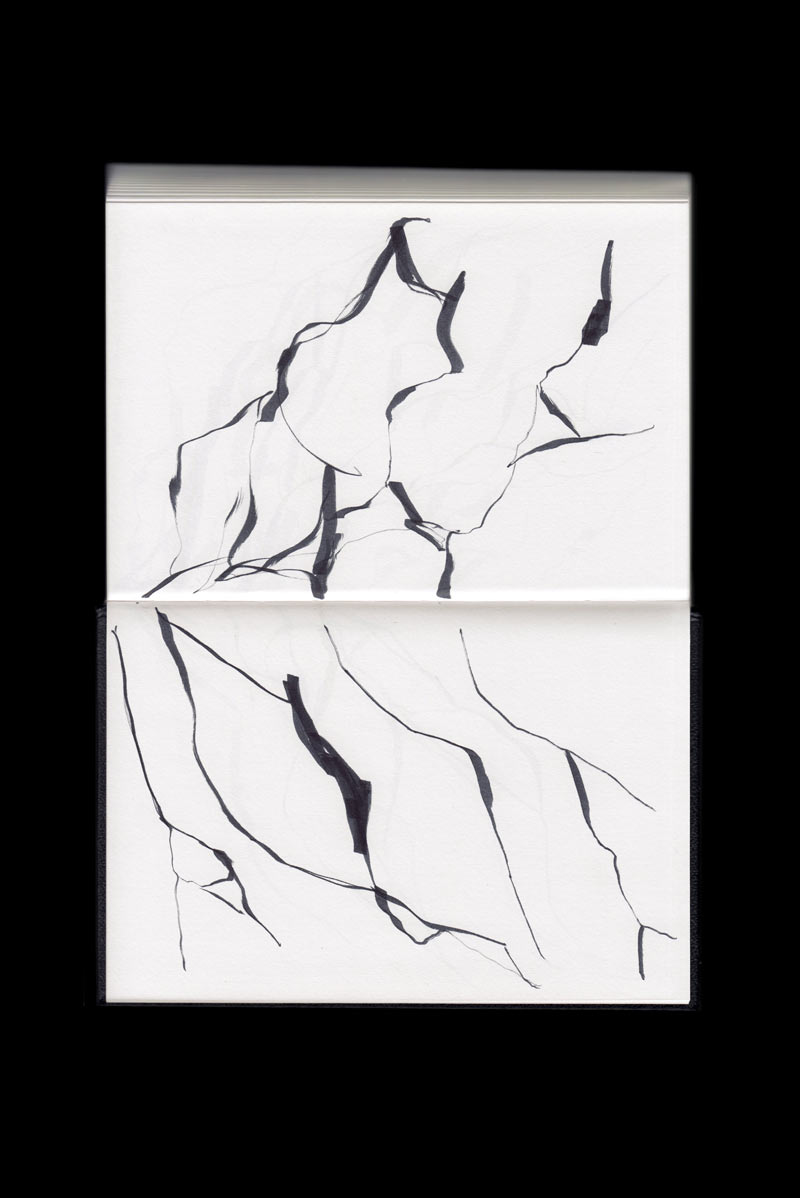
Jenny Odell is an Oakland-based artist, writer, and educator. Her writing has appeared in The New York Times, New York Magazine, The Paris Review, The Believer, McSweeney’s, and Sierra Magazine. She is the author of How to Do Nothing: Resisting the Attention Economy, a New York Times bestseller; and Saving Time: Discovering Life Beyond the Clock. Her visual work has been exhibited internationally, including at the Marjorie Barrick Museum, Les Rencontres D’Arles, and Fotomuseum Antwerpen. She has been an artist in residence at the Internet Archive, the Recology dump in San Francisco, and the Montalvo Arts Center and has taught digital art at Stanford University.
Sophie Tivona is an Oakland-based illustrator and painter who grew up in gardens around the Bay Area. She uses the medium of watercolor to channel her close observations of the natural world. Her recent clients include: Rebbl, Harper Collins Design, Remedy Quarterly and UC Berkeley.
Taking us on a walk through the folds and furrows of her Oakland neighborhood, Jenny Odell steps into the age-old conversation between rocks and water, attuning to a larger narrative of deep, geological time.
If you were to ask me where I live, my answer would depend on where we are. If we are not in my city of residence, I might say Oakland. If we are in Oakland, I might say Grand Lake. And if we’re in Grand Lake, I might say “near the rose garden.” But none of those really express where I feel myself to live, which is in a giant wrinkle—just one of many in a generally wrinkly area. Every day I walk into and out of them, considering each lump of trees and houses from the vantage point of another. I have done this since I moved here eight years ago. For most of those eight years, my restless mind and body appreciated this folded terrain without really knowing how to explain it.
I continued these daily ups and downs during the pandemic, and it was around this time that I came across the long-running blog of geologist Andrew Alden, Oakland Geology. Some of the posts were structured in a format that felt familiar to me: an amble through a particular neighborhood, often mixing geological history with architectural and cultural history. There was even one that covered part of my wrinkly surrounds: “Lakeshore ridges walk (#26).” While my knowledge of rocks and everything rock-related was decidedly amateur, there was something in these posts that reminded me of myself: just a person walking around, observing, and trying to understand a landscape.
At the time, I was writing Saving Time: Discovering a Life Beyond the Clock. My lines of inquiry about earthly, non-abstract time, coupled with my desire to give concrete examples, were bringing me up against the limit of my meager understanding of geology. I needed to know about a set of boulders in the local cemetery, about the formation of the Santa Cruz Mountains, and about the pebbles (or “beans”) of a beach called Bean Hollow. When I emailed him, Alden patiently answered my questions: the boulders were a metamorphic rock called greenstone, the Santa Cruz Mountains were being pushed up by transpression on the San Andreas Fault, and the pebbles were mostly chert, a “wide ranging” rock type whose different compositions lent it a surprising array of colors.
Alden was then in the process of working on his own book, Deep Oakland: How Geology Shaped a City, which came out last year. At a book event we did together at the Oakland Public Library, he said he’d seen an online reviewer complaining that they hadn’t learned much geology from Deep Oakland. Then he laughed and said, “Excellent.” I suspect the reviewer was operating with a narrow view of geology, or what a geology book should offer. In Deep Oakland, our geological story is inseparable from other stories—of extraction, urbanism, and real estate, all of which Alden touches upon—and geology itself is much more than a catalog of rocks. For me, it was one of those books that have changed not just my present experiences, but also memories of things I’d seen, and yet somehow not seen, in the past. It was a demonstration of a whole way of seeing, a language manual for the much vaster text I live within.
In How To Do Nothing, trying to describe a finer sense of attention, I wrote about the embarrassing moment in which I learned that my mom speaks three languages, not two. I hadn’t known this because I couldn’t distinguish Tagalog from Ilonggo. Last year, I picked up Spanish again after learning it in high school, and I find myself experiencing the same perceptual proliferation. What once sounded simply like “people speaking Spanish” has begun to resolve into something not only more specific, but completely different in conceptual quality: the immense difference between “things” and “things that mean something,” or between a collection of sounds and a familiar word. At my beginner’s level, I sometimes get caught off guard when I understand a whole Spanish sentence that I overhear on the street. It’s as though I’m unprepared for meaning to appear out of what was previously noise.
I’m still struck by how much this process characterizes any sustained attention to the natural world. One day during the pandemic, I was walking a familiar route when, just for a split second and out of the corner of my eye, I saw a northern flicker fly out of a tree. On that bright day, the bird was nothing but a vanishing silhouette, and the only way I’d been able to recognize it was through the pattern and speed of its wingbeats and the shape it made. The sight made me think of a feature I love in the common guidebook Sibley Birds West, where David Allen Sibley includes little silhouetted drawings of those shapes for certain species. In this case, a particular shape meant something to my brain even before I could consciously see the process. Shape = northern flicker. Almost like a word, I thought. “Shape = something” also described how I’d finally learned to tell a crow from a raven, or poison oak from blackberry.
With geology, I was starting from the very beginning. Everything was the equivalent of “people speaking Spanish.” Geology has plenty of its own English words: metamorphic, anticline, structural uncomformity. But these in turn reference patterns in physical places that I had to learn to read in a broader sense. It took years of consulting Doris Sloan’s Geology of the San Francisco Bay Area, and later Alden’s book, combined with various hikes in the local East Bay hills and Santa Cruz Mountains, to be able to confidently pick anything out at all. And when I could identify categories, they were big and broad, things like chert and sandstone. Sandstone was easy enough because it looked like, well, sand. (Don’t ask me what kind of sandstone, though.) And with chert I had an advantage because it showed up in so many places around here, with its red color and distinctive layers. Anyone who hikes with me these days knows I am liable at any moment to point at the side of a trail and yell, chert!!!
That sound was the age-old conversation between rocks and water, heard by humans for many thousands of years.
The more I learned about geology, the more I came to see it not as something concerning “rocks,” but “rocks and water.” My part of Oakland has been intricately shaped by the water that runs down from the higher hills to the east. Over a dozen large creeks and many more tributaries formed the numerous valleys: my beloved wrinkles. Although these streams are largely hidden underground now, the roads around here trace their original routes, which means I do too. During the pandemic, I went on countless walks along these old lines, ascending gradually and then steeply into the higher hills. Alden’s book taught me the word for this pattern: listric curve, the shape of a creek that tumbles steeply down out of boulder-strewn territory into a gradual incline, where it meanders through a floodplain before “losing its identity” in the marsh. Often, these roads uphill through the wrinkles would deliver me to an area full of upsettingly opulent mansions. Trestle Glen Road was one of those routes.
Alden’s chapter on Trestle Glen—which he refers to by its older name, Indian Gulch—exemplifies his treatment of landscapes. Far from the dispassionate, purely scientific lens that one might expect from a geologist, Alden uses the word “landslaughter” to describe what has happened to the gulch. Landslaughter means “a living, inhabited landscape killed like a steer and its life blood drained; its hide and tallow rendered into money; its flesh surveyed and cut into parcels, marketed in tranches and laid out for sale on the courthouse steps.” Formerly a “favorite neighborhood” of the Ohlone, and once a proposed public park, Indian Gulch is now an expensive suburban tract where the creek that authored it is mostly culverted and buried.
Recently, I took my copy of Deep Oakland with me on the old walk up Trestle Glen Road. The entrance to the road, which is really the entrance to Indian Gulch, is off of a busy shopping corridor, between a Wells Fargo and a BMO. There is nothing at the intersection to mark the old Ohlone village, whose former presence is inseparable from geomorphology: the creek on its listric journey had provided fresh water, the area was next to a productive marsh (now the dammed Lake Merritt), and the steep canyon walls had provided shelter from the coastal weather, as well as an amphitheater-like space for ceremony. The original caretakers of this place had loved not just its other inhabitants, but its shape.
Presently, Indian Gulch is a challenge to read because so much of its character is hidden: the creek is underground, except for in a few backyards, and the entire area is uniformly covered in picturesque houses built in the 1920s. Probably very few of the trees are any older than that. But, as Alden noted on his blog, the shape and slope of a valley can’t be hidden. On previous walks, I’d be preoccupied with details at close range: a Nest security camera ensconced in a juniper, an Amazon delivery truck, a plastic hose coming out of the window of a place being renovated, a kinglet or a bushtit in a carefully landscaped yard. Inevitably, thoughts about wealth and class would follow. On this day, book in hand, I instead tried to look up and out, past the houses to their steep backyards and the higher streets beyond. The shape was visible once I put my attention there. Even when I couldn’t see the creek, when I looked around broadly enough, I could feel the direction of its curve.
The identically pruned street trees were stark and knobby; Alden noted on his blog that winter was the best time to walk in this area because you could see past the trees to the overall shape of things. Then, just where the book promised it would, the canyon began to narrow with more dramatically sloping walls. Here, the houses looked uniform but the ground was not. Alden mentioned the “blond Franciscan sandstone of the Piedmont block,” and I started to see boulders of it strewn on hillsides too steep to develop on, slopes overrun by acacia saplings and deer trails. Some backyards looked ready to crush their houses from behind. Tumultuous hills of dirt were burying the remains of erosion control: broken wooden planks, sagging straw wattles. Below a manhole cover in the street, I heard the month’s rain rushing on its hidden, ancient course.
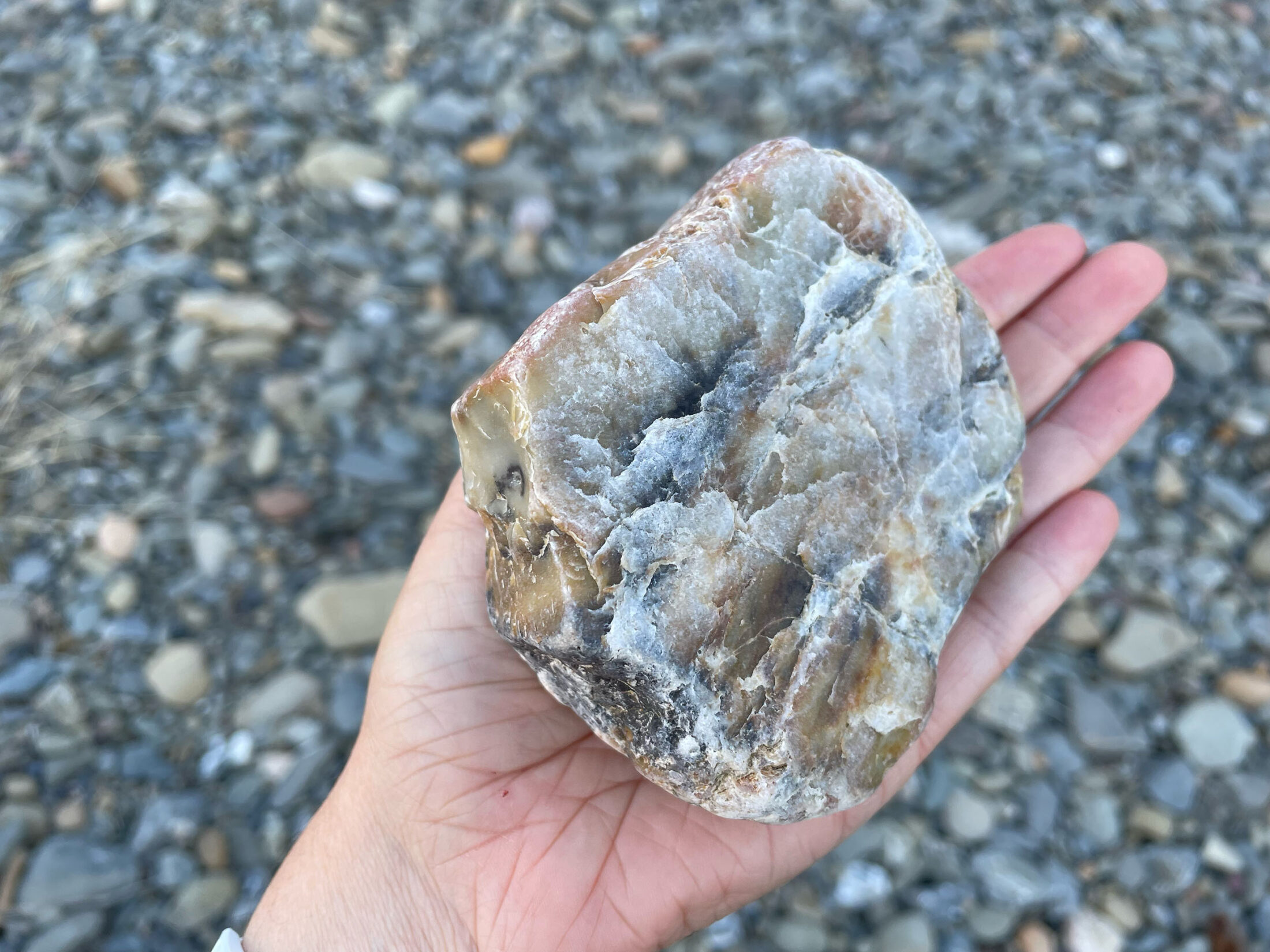
Rock observation
Photo by Jenny Odell
I labored up an old pedestrian stairway to a different street, crossing the sharp part of the listric curve. Opulent mansion territory. On the east side of one of these winding roads, I passed a vertical wall of earth—the stuff holding up the back patio of a house on the next-higher road—then doubled back for a closer look. Most of it looked like damp dirt, hosting an exuberant mix of ivy, sweet pea, and wild geranium, plus some turkey tail fungus, an escaped oleander, and an orange soda can. Moss had taken over whole sections. But in a few places, the sandstone bedrock was fully exposed. It was blond, but it was also red, orange, and black, depending on how it’d been weathered.
There was something about seeing this exposure that felt like accessing a deeply buried memory, where the memory’s referent was something from long before my own lifetime. Before the mansions, before the ranchos, before the villages, there was the sandstone. Yet it was also here in the present; when I touched it, it touched me back. I thought about Tyson Yunkaporta’s book Sand Talk, where he talks about a “dream walk,” a kind of guided meditation addressed to a person lying down. After you sink through layers of water and rock, he describes a glow coming from the center of the earth that draws you in. “You know it. You’ve seen it before,” he says. “It feels like a fish sniffing at a line, deep beneath the sea. It is faint but real at your fingertips, stirring deep in your belly.”
A few paces on, I heard a strangely familiar sound. I crossed the street to the front of a house where there was no proper sidewalk, and positioned myself where I could look into their backyard without appearing too suspicious. Beyond a metal railing, the land dropped precipitously downward into a tangle of oaks and redwoods, littered with fallen trunks and branches as all such hills are. At the very bottom, I was shocked to finally see it: the oft-hidden creek, full and white with rain, rushing in plain daylight over the sandstone. A mix of relief and giddiness washed over me. You’re real! I wanted to shout. That sound was the age-old conversation between rocks and water, heard by humans for many thousands of years. Above me, the sky was heavy with more rain.
I closed Alden’s book and put it in my backpack, taking a different route home from the sandstone hills. But even though my “tour” was officially over, it seemed to keep going: all of the lumps and valleys of my usual walks had now been transposed. They stretched outward from me more perceptibly; I felt differently situated in them. When I started to get interested in geomorphology, I would often look at my neighborhood on Google Maps and turn on the “terrain” layer, something that exposes a whole missing dimension and explains the crazy logic of the roads. Now it felt like the terrain layer had been permanently turned on in my brain. Walking was reading, and every wrinkle had a meaning. Looking up and around in the way I had just learned, I could really see the whole thing: the movement of rock, the impression of water.
There was something about seeing this exposure that felt like accessing a deeply buried memory, where the memory’s referent was something from long before my own lifetime.
Features of the land do not need to be covered in order to be hidden. A creek can be culverted in cement, but it can just as easily be erased by inattention, something I notice whenever I visit an old haunt after a long time. When I lived in San Francisco, I would often go on long walks to Glen Canyon Park, a narrow and surprisingly wild stretch of park in San Francisco. Unlike Indian Gulch, landslaughter has never been committed here, largely thanks to three women known as the “Gum Tree Girls,” who fought to protect the area from being cleared for a freeway. Because of their actions, the character and even the bedrock of Glen Canyon are on full display for anyone who cares to look.
The week before I walked up Trestle Glen, I took the BART across the bay to meet my friend Trav at the canyon—not to see any geological oddities, but just because I remembered it as a nice place. We headed up one of the many small trails on the west-facing side, grateful for the sun that still lingered on the green winter grass and the reddish boulders. In my twenties, I had wandered these trails and looked at these complicated boulders time after time. I’m sure that back then, if you had asked me what was on this trail, I would have included “large rocks.” But on this day, although I wasn’t looking for anything in particular, recognition snapped me to attention: the large rocks were chert. All of them. Chert!! I yelled. The entire park was made of it.
We came upon a collection of boulders that I remembered sitting on, usually in a particular mood, because it offered a natural view across the canyon. As I imagine is the case for many, my twenties were messy. I was recovering from a catastrophic breakup, marking time at a corporate desk job, and partying too much with my former MFA cohort, all while trying to get a toehold in the art world without being swallowed whole by its cynicism. After I discovered Glen Canyon, I would walk here from my apartment, sit on this outcrop, and glumly consider the eucalyptus forest on the other side. I’d even written a journal entry here once, in which, between my complaints, I mentioned picking up a rock near me that “looked like steak” (in retrospect, obviously chert).
Now, Trav was taking a picture of some lichens on one of the boulders. We descended into the cold recesses of the canyon, passing a wall of those now-unmistakable layers, distinct and uniform, about an inch thick: ribbon chert. In one particular spot, the layers were smushed from the sides into an upside-down U that was about twice Trav’s height. A newly learned word flashed through my head: anticline, a fold where the layers slope downward from the crest. I would never be fluent, but I was at least picking up something: the once-flat-lying ribbons spoke of accumulations of silica-based plankton in ancient seas, while the fold recorded the land’s gradual compression after that.
My mind folded in on itself trying to remember what it had been like not to think there was anything to see here. I suspect that on those earlier visits, I was just too inside my own head to care about the very thing I was next to and on top of. Even when I did find the canyon beautiful—and I did, which was the reason I kept going there—it seemed to speak to me of me, not of itself. The Standing Rock Sioux writer Vine Deloria, Jr., describing the twentieth-century American interest in national parks, wrote that rather than seeing natural entities as inherently valuable subjects, conservationists still viewed them as an aesthetic resource, “a means for providing an emotional outlet for human frustrations.” So it had been for me. The stream valley was a container for my sorrows, not a body of time and identity beyond my own lifespan, much less a body with something to say to me.
After the earth turned and the whole canyon sank into shadow, Trav and I took the bus to a lecture by David M. Peña-Guzmán, a philosopher who had written a book about the implications of studies showing that animals dream. One of the studies was about chimps who had been taught ASL by researchers, only to be observed signing in their sleep. During the Q&A, someone asked what all of us wanted to know: what were the chimps saying in their dreams? Peña-Guzmán said they sometimes signed words for objects in the room, like “ball,” and other times they asked for coffee (which was apparently a common occurrence in real life). The important thing, Peña-Guzmán said, was that you don’t use sign language unless you’re signing to someone. These were social dreams, and suddenly humans could glimpse some of their meaning.
I wrote in How to Do Nothing that “to behold is to become beholden to.” After the lecture, I thought about how much this represented a chicken-and-egg situation: to listen to something was to love it, but you had to love it enough to want to listen. I opened my messages and saw that a friend had sent me a poem, “I Find Myself Defending Pigeons,” by Keith S. Wilson. “I want to pigeontail into a quiet night, to let their oddness sit in our hands,” Wilson wrote. “You can never know a language until you quiet your own.” In the backpack at my feet was a tide log that another friend had given me at the lecture: pages of charts and graphs translating the movements of the Pacific Ocean into our grid of months and days. An ocean language manual, I thought. A key for anyone wanting to see the creatures fluent in tides. To know this language, you had to quiet your own. You had to love the ocean, writing its name in the rocks.
The next day, I emailed Alden with more questions about chert. First, I wanted to know if what I had seen was indeed an anticline. I attached a photo of the strange fold in the ribbon chert, with my friend for scale. (In the photo, Trav was tentatively touching the chert layers in the center; in real life, he’d made an untranslatable sound of delight and disgust, returning to the trail to report that it had felt “very organic.”) In his email back, Alden responded that the feature was not quite big enough to be a proper anticline, but it could be described as an anticlinal fold, which he translated to the more colloquial “frown-fold.” That said, there was another interpretation. “Yours might conceivably be an anticlinal syncline: i.e., a smile-fold somehow turned upside down,” he said. “Earth can do that and sometimes we can tell.”
I remember the first time Earth did something and I could tell. It was the 1989 Loma Prieta earthquake, whose epicenter lay on the San Andreas Fault and which was strong enough to collapse part of Interstate 880. I was four years old, going to a preschool in a small suburban house in Sunnyvale that had a raised back patio with steps down to the perimeter. When the earthquake struck, I was in the middle of trying to go down the steps, and I fell. My immediate interpretation was that my legs had stopped working, because I did not yet know what an earthquake was. More fundamentally, I knew that I could move but did not understand that the ground could move.
The 1989 earthquake, like many other earthquakes, was a creation event. It raised the Santa Cruz Mountains by more than a foot, and probably made a few anticlines while it was at it. Ascending a few blocks from my apartment to a local high point, I can still see the mountains’ ridgeline, the shape I’ve been looking at my entire life. Returning to it over and over from every possible angle, I sometimes feel so much like Yunkaporta’s “fish sniffing at a line,” or even like the chemical-seeking bacteria in Ed Yong’s An Immense World, where he’s describing the most ancient of animal senses. It’s as if I’m following some instinct for a signal. I need to be spoken to. The earthquake was the beginning of a lesson I’m still learning—about what Earth can do, what Earth can say.
One night last month, I happened to wake up at two in the morning. The rain was pouring down my street toward the old marsh, through the wrinkles and gulches it had been working on for thousands of years. I could hear it hitting the pavement, routing itself around the car tires and the trash bins. But below that, and between the occasional whisssh of cars passing, something else was audible. I strained my ears. It took a few times for me to know it was anything at all, and a few more to guess what it was, because I’d never heard it here before. Two muffled calls, like a pulse in the night. A great horned owl. I went to the window, not to try to see it but to be closer to the sound. The jolt of recognition had made me feel owl-like: wide-eyed and alert in the dark. The sound was coming from uphill. I listened, one animal to another, while we both listened to the rain.
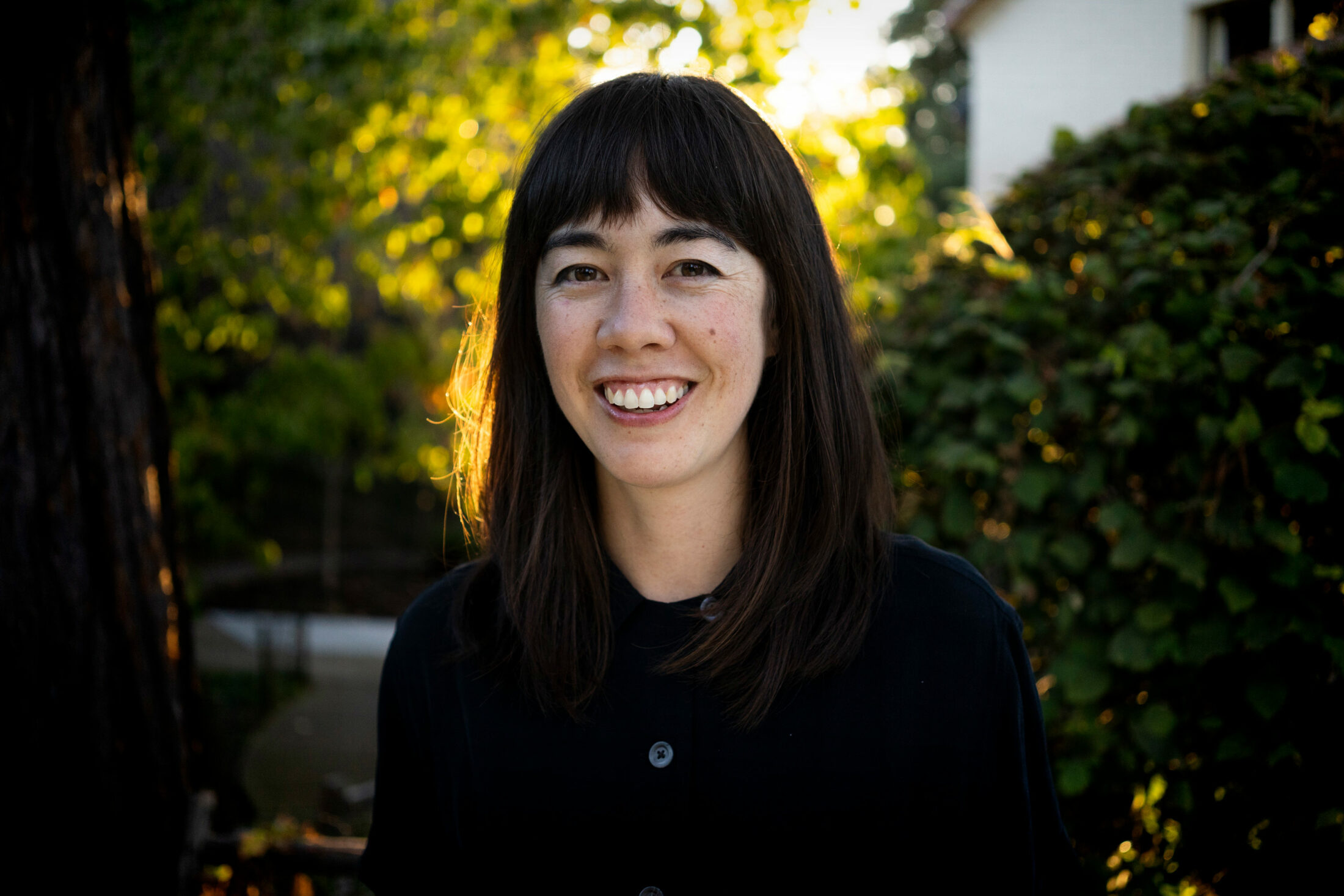
Another Kind of Time
In this sweeping interview, Jenny Odell, artist and author of “Saving Time: Discovering a Life Beyond the Clock,” invites us to embrace ways of relating to time that are tuned to the rhythms and patterns of the Earth.
